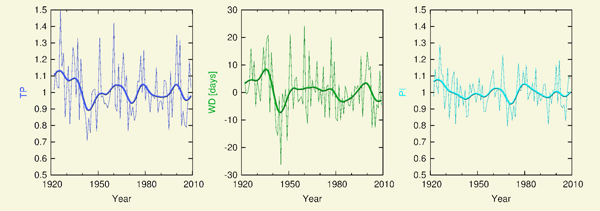Reference
Brugnara, Y., Brunetti, M., Maugeri, M., Nanni, T. and Simolo, C. 2012. High-resolution analysis of daily precipitation trends in the central Alps over the last century. International Journal of Climatology 32: 1406-1422.
Background
The authors indicate that precipitation is one of the most challenging variables in the climate sciences, noting that "it has a crucial influence on the biosphere and human activities." And, therefore, they say that "understanding the characteristics of its variability" is "becoming a priority for researchers, especially in the context of an unprecedented global climate change."
What was done
In order to see to what extent the "unprecedented" warming of the past century may have altered the precipitation characteristics of Europe's Central Alps, Brugnara et al. created a homogenized high-resolution data set composed of 200 daily precipitation series, spanning the period 1922-2009, for an area "centered on the Trentino-South Tyrol region (the central part of the European Alps), in a transition zone between the climates of the southern and northern slopes of the Alps," which they analyzed for trends of total precipitation (TP), wet days (WD) and precipitation intensity (PI), as well as very intense precipitation events.
What was learned
The five Italian researchers obtained the TP, WD and PI results depicted in the figure below.

Figure 1. The 1922-2009 histories of TP, WD and PI, where TP and PI are expressed as ratios with respect to the 1971-2000 average, but where WD is expressed as differences from the 1971 -2000 average, where thick lines represent the three series as smoothed by a low-pass Gaussian filter having an 11-year window. Adapted from Brugnara et al. (2012).
What it means
In viewing the three portions of the above figure, it can readily be seen that from approximately 1939-2009, there were no significant trends in any of the three precipitation parameters over that seven-decade interval, when the bulk of the global warming most recently experienced by the earth has been claimed by climate alarmists to have been unprecedented with respect to the past millennium or two. In addition, they note that the most intense events (those over the 90th, 95th and 99th percentiles) have small trends over the full period analyzed, which are rarely significant even on a local scale. And these sets of observations cast a huge amount of doubt upon climate-alarmist predictions of greater precipitation - including more intense precipitation extremes - occurring in tandem with rising temperatures.




